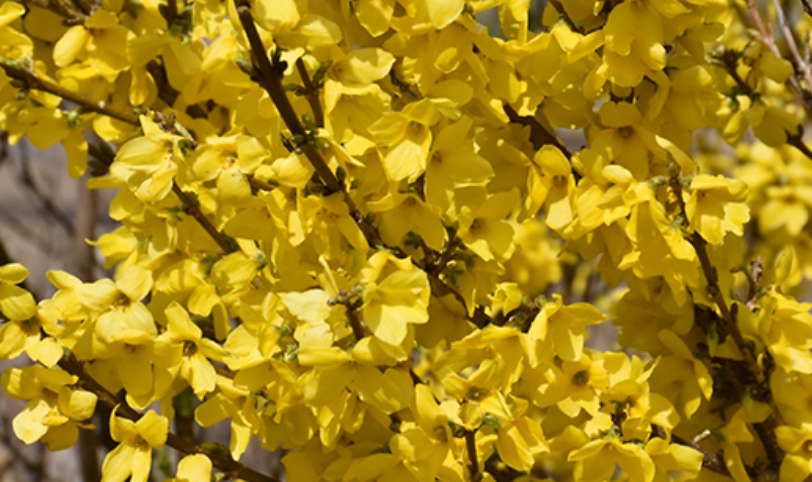
Ask The Experts!
We don't just sell trees and shrubs, we are here to share our knowledge and offer continues support as you learn to care for your new plants! At the Glasshouse we love to educate and share our experience to help you succeed!
Forsythia: A Golden Harbinger of Spring
In the awakening landscape of early spring, few sights rival the radiant burst of color offered by the forsythia. With its brilliant yellow blooms adorning bare branches, this hardy shrub heralds the arrival of warmer days and the promise of new beginnings. Revered for its beauty, resilience, and ease of cultivation, forsythia holds a cherished place in gardens and landscapes around the world.
-

Welcomes The Arrival of Spring
-

Green Foliage Follows the Spring Bloom
-

Large and Small Growing Varities Available
The Benefits Of Winter Heather (AKA Heath)
Origins
Forsythia, a genus of flowering plants in the olive family (Oleaceae), comprises several species native to East Asia. The most commonly cultivated species, Forsythia × intermedia, is a hybrid between F. suspensa and F. viridissima. Known for its vigorous growth habit and profusion of early spring blooms, this hybrid has become a beloved favorite among gardeners.
Characteristics
Forsythia typically forms a dense, upright shrub reaching heights of 6 to 10 feet, though some varieties may grow taller. Its branches are lined with pairs of opposite leaves, which emerge after the bright yellow flowers have faded. The true showstopper, however, is the profusion of golden-yellow blossoms that cloak the bare branches in late winter to early spring, creating a spectacle of color that signals the end of winter's grip.
Symbolism For Spring
Beyond its ornamental appeal, forsythia holds symbolic significance in various cultures and traditions. In East Asian folklore, the blooming of forsythia is often associated with the Lunar New Year, symbolizing prosperity, abundance, and the arrival of spring. In Western cultures, it's seen as a harbinger of warmer weather and a cue for gardeners to begin their spring preparations. Forsythia's vibrant blooms also inspire artists and poets, evoking feelings of joy, hope, and renewal.
Low Maintenance
One of the most appealing aspects of forsythia is its ease of cultivation and adaptability to a wide range of growing conditions. It thrives in full sun to partial shade and is tolerant of various soil types, provided they are well-drained. Forsythia is also remarkably resilient, capable of withstanding cold temperatures and drought once established. These qualities make it a popular choice for hedging, screening, and mass plantings in both urban and rural landscapes.
Pruning
Pruning is best done immediately after flowering, as forsythia blooms on old wood. Removing spent flowers and thinning out congested growth can help improve air circulation and sunlight penetration, leading to healthier plants and more prolific blooms in subsequent years.
Environmental Benefits
In addition to its ornamental value, forsythia provides important ecological benefits. It's early spring blooms serve as a vital food source for pollinators such as bees and butterflies, helping to sustain these essential insect populations as they emerge from winter dormancy. Forsythia also provides habitat and shelter for small birds and other wildlife, contributing to overall biodiversity in the garden.
Prevents Soil Erosion
Forsythia possesses strong, deep healthy roots, making it the perfect option for erosion prevention planting. This hardy plant can thrive in various soil conditions, making it a versatile choice for landscaping projects.



